Lieutenant Colonel George Fraser Eadie was a Commanding Officer of the 1st Canadian Parachute Battalion, leading them in their advance towards the Baltic as part of the 3rd Parachute Brigade.
He was born on July 20, 1917 in the Canadian city of Winnipeg. In the late 1930s he served as a Private with the Calgary Highlanders and Royal Winnipeg Rifles. When the war broke out he was working for Ford Motor Company, a job which he quickly left to accompany the Rifles overseas as a Lieutenant. He was also a keen athlete who refused the chance to play professional hockey with the Chicago Black Hawks, joining the Canadian Army instead.
He later joined the 1st Canadian Parachute Battalion. He completed parachute course 121 at Ringway from June 18 - 3 July 1944, completing 8 descents and joining the Battalion in Normandy.
His sense of humour was relayed by Private Jan DeVries via an obituary in the Canadian Press:
"[Jan] recalled an incident in Normandy when Mr. Eadie spotted a German tank and called for artillery support, telling the gunners he faced a Tiger tank, a formidable piece of armour. When a corporal pointed out that the tank was, in fact, a smaller though still potent Mark IV, Mr. Eadie smiled at him: "Don't spoil a good story."
Eadie shares his own anecdote from the time in the Bois-de-Bavent area:
"Enemy activity was generally confined to harassing fire from their 88mm batteries in the valley to the east. Their prime shots were usually sharp at 12 noon...One or two unfortunate paratroopers were caught in the embarrassing activity of a BM in a roughly constructed "John" in the middle of the orchard. At the sound of the enemy guns, the whole orchard would erupt with the raucous sounds of verbal assistance, encouragement and questionable advice directed to the unfortunates as they ran hell for leather with trousers around their knees for the closest available cover".
On a more serious note, Eadie was insistent that vital reinforcements from other units not be forgotten. He remembers:
"Following the early days in Normandy when the Battalion had suffered severe casualties through killed, wounded and missing the fighting strength of the rifle companies and their support platoons was severely depleted...Approximately 100 officers, NCOs and Other Ranks volunteered to serve with our Battalion....These volunteers, from the following Regiments, did much to fill out under-strength sub-units and were a welcome boost to morale: the North Shore Regiment, the Nova Scotia Highlanders, the Royal Winnipeg Rifles, the Regina Rifle Regiment, the Highland Light Infantry of Canada, the Stormont Dundas and Glengarry Highlanders...the Battalion was so impressed with these reinforcements that no stone was left unturned to have them remain with the Battalion and ultimately be qualified as paratroopers...Unfortunately for the Battalion, approval was not forthcoming...Their participation is not normally chronicled nor widely known. The Battalion however, remains forever grateful for their tremendous assistance in a time of great need".
During the Normandy campaign, Hill personally called on Eadie as Deputy CO to stay close to his commander GFP Bradbrooke as "he's a bit nervous". As they sat together in a trench, an 88m shell came crashing down near Hill and Eadie; "He [Hill] didn't move, so I didn't either. Hill was testing me".
After Lieutenant Colonel Bradbrooke returned to England to take a position on the general staff of the Canadian MHQ, and whilst his second in command Jeff Nicklin was still recovering from injury (evacuated June 23), Eadie took over for the first time as interim CO of the Battalion. This lasted from August 23, 1944 when the Battalion was in Annebault, until September 8 when the Battalion was back in England and Nicklin rejoined them. Eadie then continued to fight with the Battalion during the Ardennes offensive in December as 2 i/c, in conditions which were less than enviable:
"Fifteen enemy infantry Divisions supported by Panzers and Paratroops were heading West...on 20 December 6th Airborne Division's advance parties were hastily put together for a fast run to Tilbury Docks in London and hence by landing craft to Ostend...That winter in the Ardennes was one of the worst in years. Heavy snow had fallen making road travel almost impossible...it remained to the ground forces...to halt the advance".
Then, during the drop over the Rhine on March 24, 1945, Jeff Nicklin was tragically killed as he came into land. The Canadians were briefly left rudderless and in need of direction. Eadie stood up to the task without hesitation: "Fraser immediately assumed command", recalled Jan DeVries. He led his men to a successful day of fighting in which their objectives had been taken by 1130, and a link up with ground troops achieved by 1545. Eadie later praised the planning of Varsity:
"All were quite aware that their Brigade Commander had requested and received approval to have the Brigade Drop Zone relocated from a field some distance away from the actual objective to directly on the objective. This meant there would be no hiking into battle as had been the case of those poor devils of the 1st Division at Arnhem. A move such as this and the Commanders statement of overwhelming artillery support right up to H hour, gave the troops tremendous confidence".
After Varsity, the Canadians marched rapidly across Germany, helping to liberate Bergen Belsen concentration camp on April 15. Eadie would later describe the scenes:
"On our way up to the Elbe river [we arrived] at a place called Bergen-Belsen, just outside of Celle...and it was a shambles I can tell ya...the prisoners were not in any way connected with military, they were ethnic groups of Israelis...and were in absolutely dreadful shape. Our medical officer [Captain Patrick Gerald Costigan] told me that they were losing somewhere in the neighbourhood of 215 a day of new deaths within the camp".
The Canadians continued their progress in commandeered cars, trucks and even a few fishmonger's bicycles. They were known for looting geese, alcohol, and German parachute smocks along the way, with Eadie himself apparently driving a large German staff car. By the time they finally made it to Wismar as one of the first allied units to reach the Baltic before the Russians, they were thus well stocked. Jerry McFadden described their encounter in a letter to his wife:
"As we drove into Wismar near dusk, we soon saw Russian Army tanks on the coast road. The next morning, in the town square of Wismar, it was estimated there were over 6,000 soldiers, silently awaiting instructions to a POW camp. All Germans, civilians and soldiers, are terribly afraid of the Russians and I don't blame them. The Russians are just as tough as they look and can they drink!! The Vodka stuff is like "kick-a-poo joyjuice". German girls haven't got a chance. But I can't blame the Russians, they are just paying back a few scores. Wonderful fighters, even the tank drivers (girls) are tough. We are much too soft"
Private DeVries recalled that the Russians had orders to go to Denmark. Eadie told his men to "get ready" before declaring to the Russian officer, "you better have ten men for my one'". According to DeVries, the Russians backed down after that.
The official history of the Canadian army expanded on their arrival in Wismar:
"Wismar was the end of the road. At this picturesque medieval town, once a Hansa city, the Canadians and the Greys reached the shores of the Baltic and met the Russians. The place fell on the evening of the 2nd without resistance, though tanks did a very little firing at an aerodrome north of the town. That night a Soviet officer arrived "in a jeep, with his driver". He had no idea that Allied forces were in Wismar until he came to the Canadian barrier. "He had come far in advance of his own columns, and was quite put out to find us sitting on what was the Russians' ultimate objective." The next day there was "considerable visiting" between Canadian and Russian officers, and the latter, the Canadians recorded, "proved to be the most persistent and thirsty drinkers we had ever met". The "shooting war" was over for the 1st Parachute Battalion. It had had an excellent fighting record. During the advance from the Rhine to the Baltic, since the day of the "VARSITY" drop, 24 March, it had suffered 61 casualties, 15 men losing their lives. Its casualties for the whole campaign numbered 496, of which 125 were fatal.
It was fitting that the first Canadian unit to fight in Normandy should also be the Canadian unit to penetrate deepest into Germany. Wismar, taken by Lt.-Col. Eadie's men and the Royal Scots Greys, was in fact the most easterly point reached by any Commonwealth troops in this campaign, and the first point where any Commonwealth troops serving in it made contact with the Russian ally. It is satisfactory that a Canadian battalion was there".
As the Canadians' CO, Eadie was remembered as strict but not overbearing, as his predecessor Nicklin sometimes was. He knew "when to be on parade and when to be off parade", according to one soldier. Sergeant Feduck adds that Eadie was "very strict but extremely smart...He had a way of talking to the men at their level - never mocked or down graded you". Eadie added in his own words, "I always believed that I must lead them or I couldn't live with myself. The only way to be promoted was if I was held in good esteem by my men. I never asked them to do anything I wouldn't do myself".
George Fraser Eadie was awarded the Distinguished Service Order on January 24, 1946. His citation reads:
Lt.Col. Eadie joined the 1st Canadian Parachute Battalion in Normandy in August 1944 and assumed temporary command of the Battalion at Annebault during the advance to the Seine. His leadership and determination to pursue and get to grips with the enemy inspired his men enabling them to achieve a series of outstanding successes until the Division was withdrawn from the Seine on 3rd September 1944.
Lt.Col. Eadie carried out his duties as second-in-command of the Battalion during the battles in the Ardennes in December 1944 to January 1945 with great distinction, and on dropping over the Rhine on 24th March 1945 he immediately had to assume command of the Battalion on the death of the Commanding Officer on the DZ. His brilliant handling and inspiring leadership of his Battalion enabled them in spite of heavy opposition and considerable casualties to capture all their objectives and inflict tremendous losses on the enemy. Throughout the campaign until 10th May Col. Eadie's inspiring leadership and utter disregard of danger enabled his Battalion to kill and rout the enemy wherever they found them. The battles of Greven, Dortmund-Ems Canal and Ricklingen Bridge, and the rapid advance of his Battalion to Wismar on the Baltic are instances where his outstanding leadership had a decisive influence on the result of the engagements.
He was further awarded the Silver Star Medal, dated July 26, 1947, with the following citation:
"Lieutenant Colonel George Eadie (ten Major) 1st Canadian Parachute Battalion for gallantry in action against an armed enemy of the United States in the vicinity of Wesel, Germany on the 24th March 1945. Lieutenant Colonel Eadie parachuting into Germany at H-Hour quickly organized his Battalion and led it against extremely defended position [sic]. His aggressiveness personal leadership and courage carried his battalion forward in a driving attack which destroyed the enemy and permitted a rapid consolidation and exploitation of the area. Constantly to the fire, Lieutenant Colonel Eadie, by his bravery, intrepid action and gallantry, contributed materially to the success of the airborne mission".
He later served as the honorary president of the 1st Canadian Parachute Battalion Association. He also become honorary Colonel of the Canadian Airborne Regiment on August 11, 1989.
George Fraser Eadie died on August 11, 2003.
Compiled with information from:
Victory from Above: The First Canadian Parachute Battalion (TV Documentary)
Obituary of Fraser Eadie by John Ward, August 15, 2003
Obituary of Fraser Eadie in the Globe and Mail, August 13, 2003.
1st Canadian Parachute Battalion, 50th Anniversary booklet (June 1992)
https://eucmh.com/2021/04/25/canada-1-cpb-belgium-holland-germany/
Airborne Assault Archive (Boxes 3 F2 3.17.1 and 3F2 3.17.2)
Article written by Alex Walker
Read More




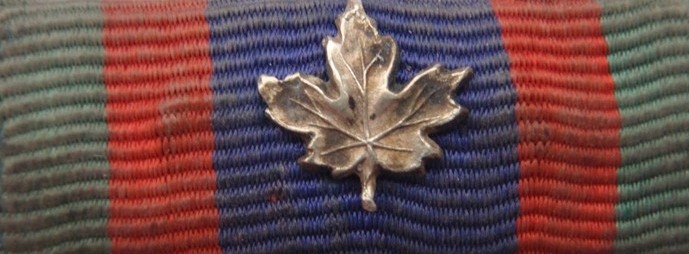
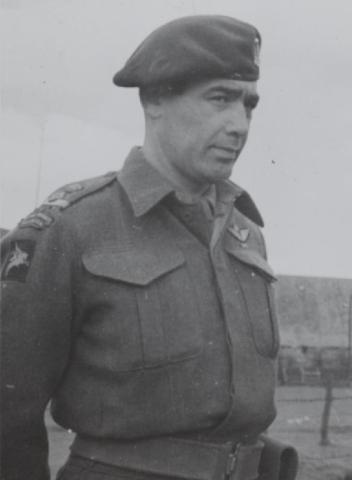
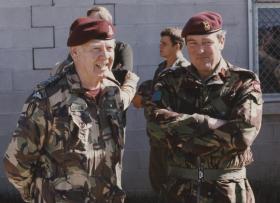
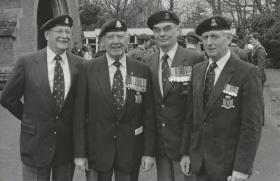
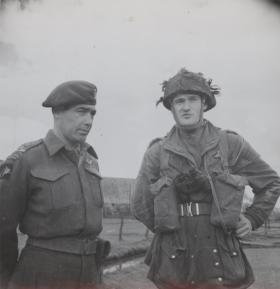
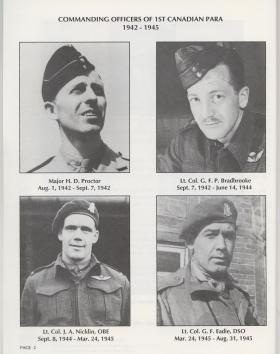
Latest Comments
There are currently no comments for this content.
Add Comment
In order to add comments you must be registered with ParaData.
If you are currently a ParaData member please login.
If you are not currently a ParaData member but wish to get involved please register.